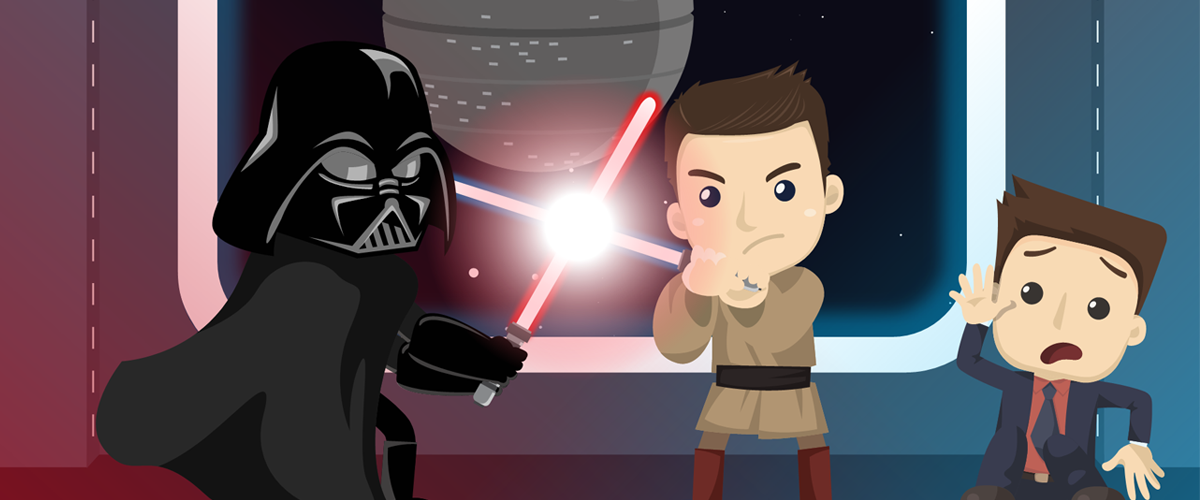A good presentation comes in a package. This includes an effective speaker supported by powerful visuals. A PowerPoint that complements your performance is essential in leaving a lasting impact on people. There are many aspects of visual design, and among one of the most important is your choice of fonts.While crowding text is highly discouraged, text isn’t necessarily banned from your slide deck. Arranging text strategically in your PowerPoint and choosing the right font style and size can drive home a powerful message.But that’s often easier said than done. How do you use text to communicate to your audience? Which fonts prompt a response? We attempt to answer these questions with a few basic rules:
Limit the Fonts You Use
Familiarizing yourself with the pros and cons of both serif and sans serif fonts will save you time choosing between them. However, there are several font types, and deciding which one to use is still pretty tricky. Using three or more fonts is already a bit of a handful.According to Engage Interactive developer, Jamie Wright, if you can’t justify your use of a third font, it would be good to keep it out of the picture. Too many fonts can be confusing for your audience. You want your audience to focus on your speech, not on a distracting font. If you want to draw your audience’s attention to the text on the slide, try combining font types.For example, serif fonts are often used for the body of text, while sans serif fonts are used as headlines. Because sans serifs are easier to read, using them for a headline draws immediate attention. On the other hand, serifs guide the eyes with their design, making them better for longer blocks of texts. Knowing the strengths of different font types will let you use them to your advantage.
Consider Readability
Size matters. Unless you intend to have it invisible to the viewer, your text should be readable. Color also plays a huge role in presentation design. The color you choose evokes a psychological response on your audience. Audience members respond differently to different types of colors. But also make sure your words are visible by choosing a color that contrasts with its background.Contrast is a key element of text readability. Low-contrast text and text with color similar to its slide are unreadable. People won’t be able to get the message of your presentation if they can’t see what’s on your slide. At the same time, don’t overdo it.Don’t sabotage yourself with flashy, animated text. Keeping your text simple yet readable is enough to keep your audience’s attention.
The Font that Must Not Be Used
Aside from bullet points, another PowerPoint taboo is the use of Comic Sans. The Comic Sans font has gained a bad rap for a number of reasons. Among these is the font being overused in inappropriate situations. While there is nothing wrong with this font per se, you wouldn’t want to be associated with it.The general disapproval of Comic Sans is enough to discredit any presentation that makes use of the infamous font. If you want to look for similar but less stigmatized options, there are alternatives to choose from. Ban Comic Sans, an organization dedicated to eradicating the notorious font, provides an entire list on their site.But still use them wisely. Don’t go for unconventional fonts on a whim. Always think about the effect your font will have on your presentation.
Conclusion
When organized strategically, text can enhance presentation design. In order to maximize the element of text, consider the fonts you use. Don’t saturate a slide with several fonts unless you can justify it. Be aware of font size and color. Any text you put on a slide must always be clear and readable to your audience. Similarly, don’t go over the top with your design.Unconventional fonts can be distracting. The main purpose of your font choice is to emphasize what you’re trying to say, not draw attention to itself.If you want professional help in deciding how to organize your PowerPoint, contact our SlideGenius experts today and get a free quote!
References
“Fonts.” Ban Comic Sans. Accessed October 8, 2015. www.bancomicsans.com/mainWright, Jamie. “How Many Fonts Is Too Many Fonts?” Engage Interactive. Accessed October 8, 2015. www.engageinteractive.co.uk/blog/how-many-fonts-is-too-many-fontsSpector, Lincoln. “Six PowerPoint Nightmares (and How to Fix Them).” PCWorld. Accessed October 8, 2015. www.pcworld.com/article/237106/six_powerpoint_nightmares_and_how_to_fix_them_.html Featured Image: “Stencil Font” by Cory Schmitz on flickr.com



